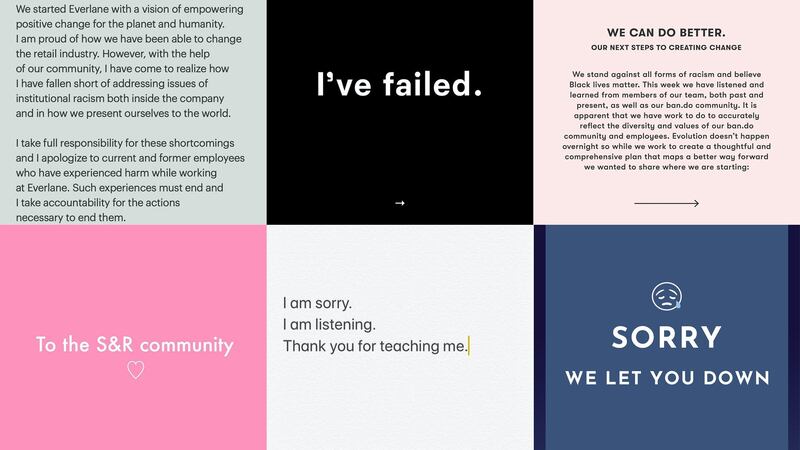
The Business of Fashion
Agenda-setting intelligence, analysis and advice for the global fashion community.

Agenda-setting intelligence, analysis and advice for the global fashion community.

The author has shared a YouTube video.
You will need to accept and consent to the use of cookies and similar technologies by our third-party partners (including: YouTube, Instagram or Twitter), in order to view embedded content in this article and others you may visit in future.
NEW YORK, United States — For the latest in our series of #BoFLIVE events, Executive Editor Lauren Sherman sat down with Jesse Derris, founder of his namesake PR agency, and Mory Fontanez, founder and chief executive 822 Group. In the virtual panel discussion, the expert panel reflected on how brands should manage their external communications in response to a crisis.
With the advent of social media there has been a “democratisation of power, and what we’re seeing now is brands, executives and CEOs being called out publicly in a way the workforce and consumers didn’t have the power to do before,” said Fontanez. Most recently, brands across the fashion industry have been criticised for engaging in performative allyship in response to mounting anger over systemic racism in the US. Both consumers and employees of the brands were quick to highlight that simple social media posts rang hollow when the corporate structure at these companies lacked diversity.
“Crisis comes from chaos that’s been building internally inside of an organisation for a very long time… The answer I give [brands and executives] is… [you] have to start with some radical self awareness right now about what is truly happening internally at this organisation that has allowed this thing to grow in the way that it has,” Fontanez added.
To participate in #BoFLive, BoF’s digital events series offering insight, advice and inspiration, visit our calendar where you can find details of upcoming digital events.
Practitioners of this historically behind-the-scenes profession are building powerful followings, riding a wave of interest in how the fashion sausage is made. But even the highest-profile PRs caution that the client still has to comes first.
Join us for a BoF Professional Masterclass that explores the topic in our latest Case Study, “How to Create Cultural Moments on Any Budget.”
When done effectively, a cultural partnership can rightfully earn its own place in the zeitgeist. But it’s not so easy as just hiring a celebrity to star in an ad campaign; brands must choose a partner that makes sense, find the format that fits best and amplify that message to consumers.
Calvin Klein’s chief marketing officer Jonathan Bottomley speaks to Imran Amed about the strategy behind the brand’s buzzy Jeremy Allen White-fronted campaign.